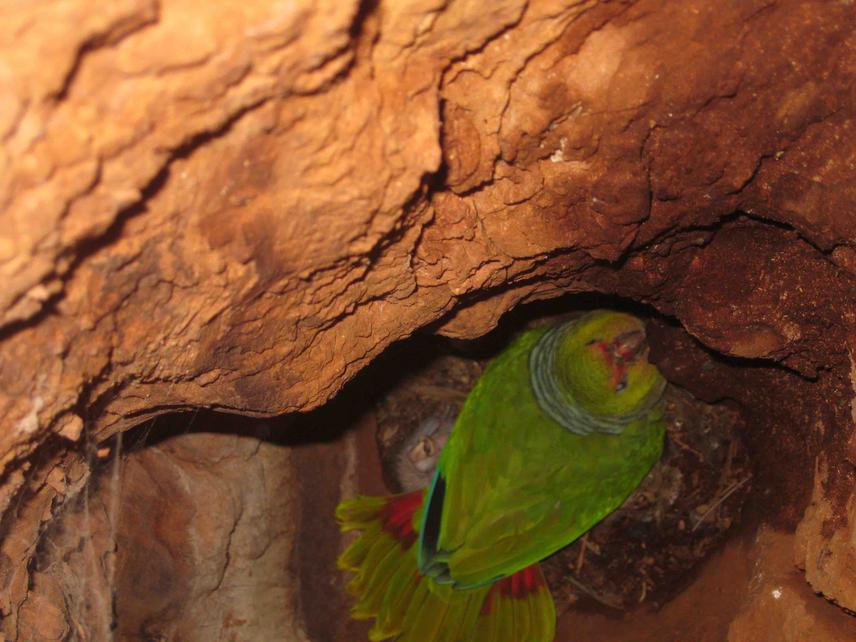Kristina Louise Cockle
Other projects
11 Sep 2003
Status and Conservation of Birds and Large Mammals in Remnant Parana Pine Forest, Misiones, Argentina
21 Sep 2015
Parana Pine Forest Project: Research and Outreach to Conserve Nest Sites for Globally Threatened Birds in Argentina
The aim of the project is to conserve the threatened species of Argentina’s Parana Pine Atlantic forest, especially birds, through research and public education.

In Argentina, nearly all the remaining Parana Pine (Araucaria angustifolia) forest is on small farms.These farms provide critical habitat for the endangered Vinaceous Parrot (Amazona vinacea), which cannot be protected in parks. The farms are also home to the White-bearded Antshrike (Biatas nigropectus), Canebrake Groundcreeper (Clibanornis dendrocolaptoides), Brown Howling Monkey (Alouatta guariba), and many other threatened species. Our research since 2003 showed that the Vinaceous Parrot is threatened by capture of chicks as pets, the White-bearded Antshrike critically depends on yatevó bamboo (Guadua trinii), and the Canebrake Groundcreeper requires springs with vertical banks in closed forest. We work with local farmers and their children to conserve these species on their farms.
Our conservation actions are driven by the results of our own research and that of colleagues. Since 2003, we have used posters, pamphlets, radio, and visits to schools and farms to reduce capture of Vinaceous Parrots. For 2008-2009, our public education will focus on the interdependence of humans and forest, the needs of threatened specialist birds like the White-bearded Antshrike, and the importance of keeping nest trees on farms, for cavity-nesting birds. Many local farmers have been contributing to this project by helping to monitor Vinaceous Parrots and other species. We want these farmers to feel proud to be conserving so many threatened species and their habitat on their farms. We are encouraging them to form a network of farms where Vinaceous Parrots are protected.
Our research now focuses on two main themes. First, we are studying the ecology and conservation of cavity-nesting birds (i.e. birds that nest in holes in trees), using experiments and field observations to determine whether nest cavities or other factors limit reproduction for these species. Nest site limitation or poor quality of available cavities may be important threats to the Vinaceous Parrot and other species in disturbed habitats where the largest trees have been harvested. Second, we are studying the natural history, habitat and distribution of several threatened birds, including the Black-capped Piprites (Piprites pileata) and Canebrake Groundcreeper. With the help of local farmers and park rangers, we continue to monitor Vinaceous Parrot populations. We use the results of our research to inform decision-makers and guide our public education program.